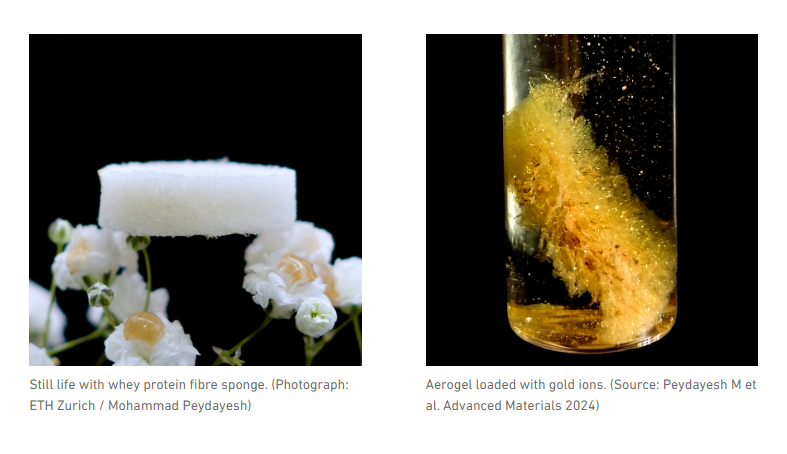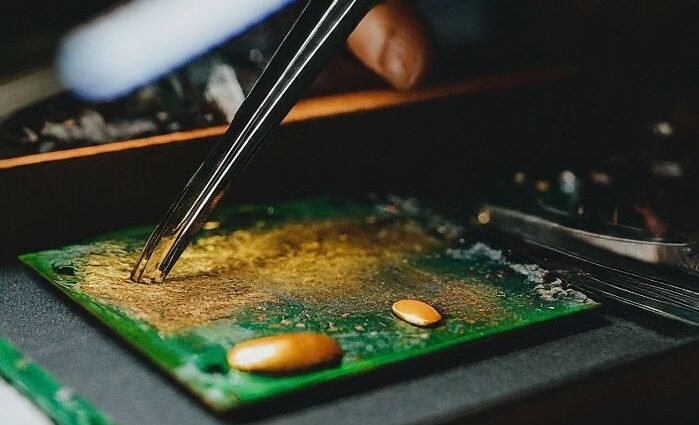Scientists at ETH Zurich in Switzerland have found a way to convert electronic waste (e-waste) into a literal goldmine. The researchers came up with a unique method to obtain valuable metals from electronic waste using a sustainable approach involving a byproduct from the food industry.

The team suggests that for every dollar spent, you could potentially earn $50 worth of gold, making it a profitable opportunity, plus this method is very eco-friendly. It uses protein fibril sponges made from leftover of protein-rich materials from cheese production which enabled the team to extract gold from electronic waste.
As detailed in a new paper the team was able to recover a 450-milligram nugget of 22-carat gold from just 20 old computer motherboards.

To do it, the team created a sponge by denaturing whey proteins at high temperatures and acidic conditions to form protein nanofibrils, which were then dried. Metal parts of 20 motherboards recovered from e-waste were dissolved and ionized in a bath. Then, they put a sponge in the solution to attract the gold ions.
The team heated their sponge to reduce the collected ions into flakes, and eventually melted them to create a small gold nugget. The nugget weighed 450 milligrams and contained 91 percent gold and 9 percent copper. At the current price per ounce, the gold in the nugget is worth approximately $33.

The team believes that the energy costs of extracting from e-waste are a mere 50th of the value of the gold that can be recovered, making the process highly profitable when expanded. They are now seeking ways to promote their concept and are exploring other protein-rich byproducts that could also be converted into sponges.
Reference- ETH Zurich Newsroom, Interesting Engineering, Popular Mechanics, Futurism, Journal Advanced Materials,






